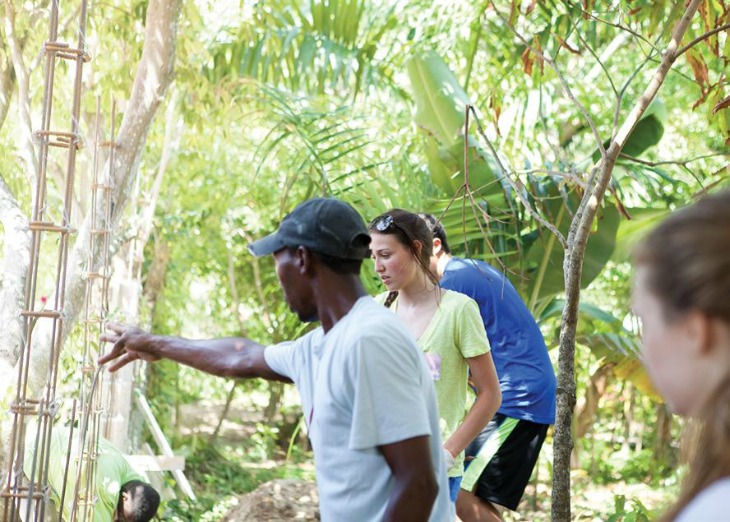Jon Davey is a Professor of Architecture at Southern Illinois University. He has traveled with us for 6 years, leading many tours abroad with students from a variety of disciplines.
You might not think that architecture, neuroscience and service learning go hand in hand—but Dr. Jon Davey sees connections a lot of us miss. “ All my architecture courses have lectures about neuroscience,” says the Southern Illinois University professor. “ The word neurology was created in 1620 by a gentleman who belonged to a group called The Oxford Circle. One of the members who did all of the drawings of the brain was Sir Christopher Wren—who designed St. Paul’s Cathedral in London.”

Unexpected connections are what make Jon’s approach to education abroad—and in general—so interesting. According to Jon (and the Roman architect Vitruvius), “ Architects don’t only need to know how to design buildings, they need to know how to build buildings.” Since most architecture schools lack programs that let students build the designs they’re working on, Jon believes it only makes sense to find another way to provide a tactile learning experience
THE SERVICE LEARNING CONNECTION
A couple of years ago, a tornado killed 8 people and displaced many others in the southern Illinois community where Jon lives. He wanted to help and, with the support of the mayor and the local chapter of the American Institute of Architects, set up a design studio at the local library. From there, he and over a dozen students and faculty members spent their spring break designing 20 new homes and providing structural consultations during the rebuilding process.
After this spontaneous initial experience combining service with architecture, Jon began looking for something a little more hands on and structured for his second. He spent some time teaching and volunteering with a program called Let Haiti Live. “I started branching out on the island and came across EF’s work in the Dominican Republic,” he remembers. “So I made arrangements to meet with Ekow (EF’s local Service Learning Field Director).” Ekow had recently acquired a $5,000 grant from USAID to construct a shelter for a women’s center in the town of Jarabacoa. This gave Jon an idea—he and his students would help design and build it.
He quickly garnered support from his administration and recruited 20 architecture students to travel with him. The Southern Illinois Institute of American Architects donated $1,000 for the project at Jon’s request. Back in Jarabacoa, Jon’s vision took shape. “I specified the wood and the other details I needed to make the project work. We were able build the trusses, planting, clearing the forest reserve, rebuilding decks and seating … and [my students] had a great time doing it.”
CONNECTING LECTURES TO THE WORLD
While there, Jon and his students made time for a walking tour of the Colonial City in Santo Domingo. His students were admiring an old-world cathedral when, Jon says, they spotted a connection to one of his on-campus lectures. “They noticed before I did that the same three dimensional brick work you can see at the Colosseum was right there in front of them. Then they realized that they were looking at the Ancient Roman architecture that influenced the colonizing Spaniards.”
As we were discussing the power of integrated experiences like this, we asked Jon why it is so important that students learn how to both build and design. With the casual expertise we had come to expect, he told us, “It increases the capability of neuroplasticity. You’re doing multi-modal things—not just sitting and listening, sitting and reading, or sitting and watching—you’re physically producing something. That means you’re touching it, smelling it, getting splinters in your fingers. What you’re really doing
is creating very rich neural networks of learning in all the senses. And that’s really special.”
Well, we think so, too.
Our service learning programs connect you with grassroots organizations that explore the key themes of education, environmental sustainability and community development.
Read our other academic related blog posts here.



